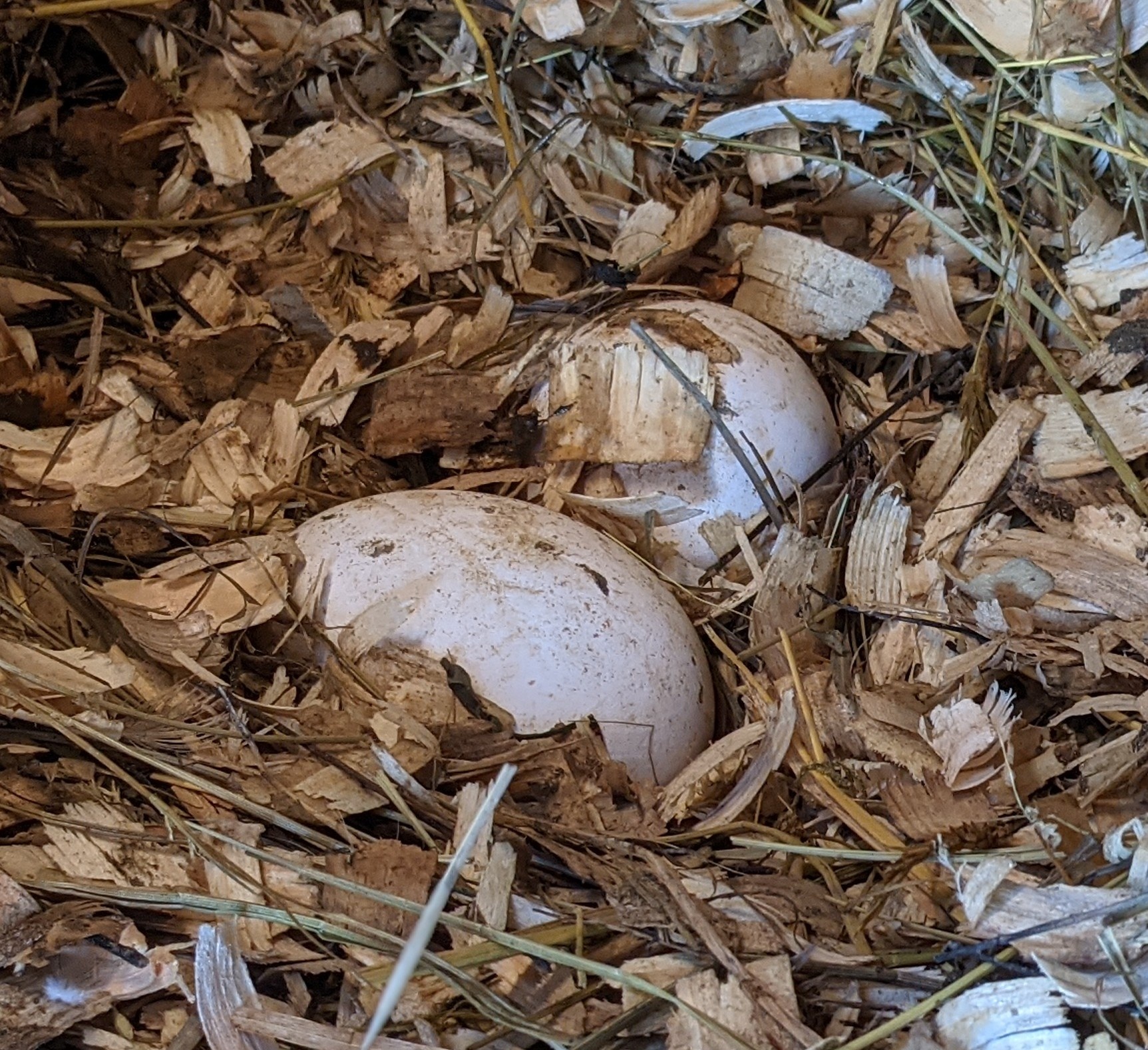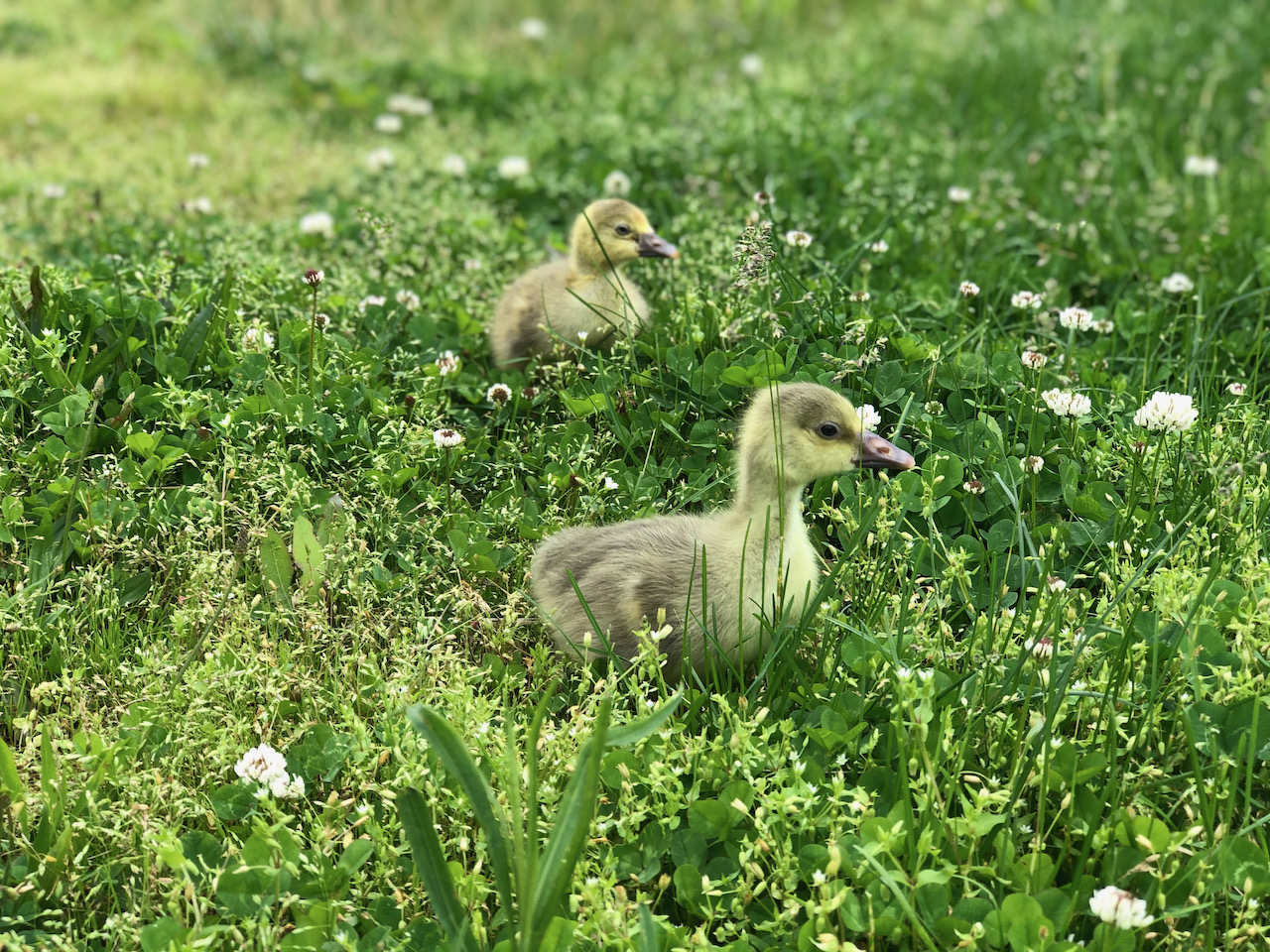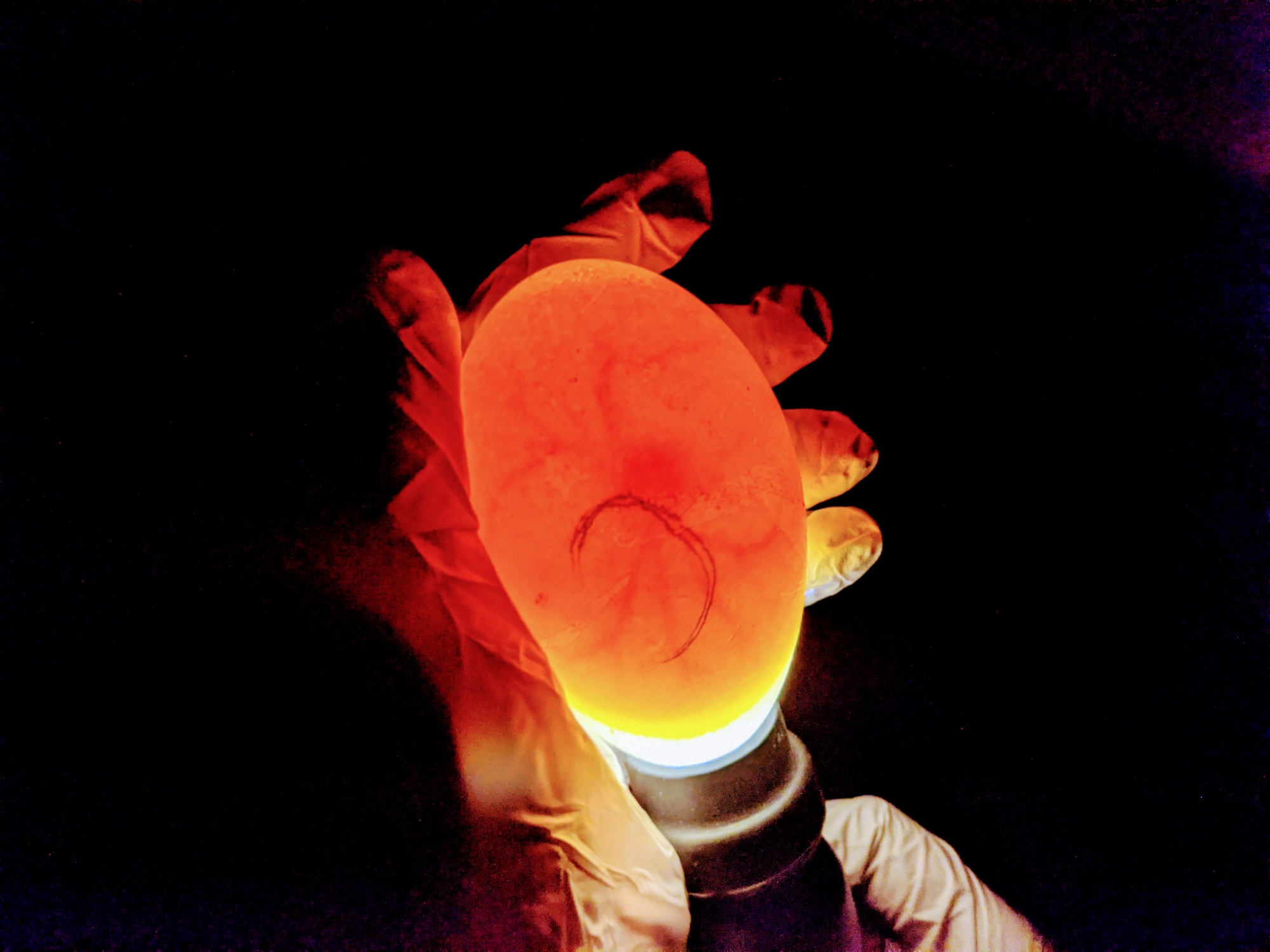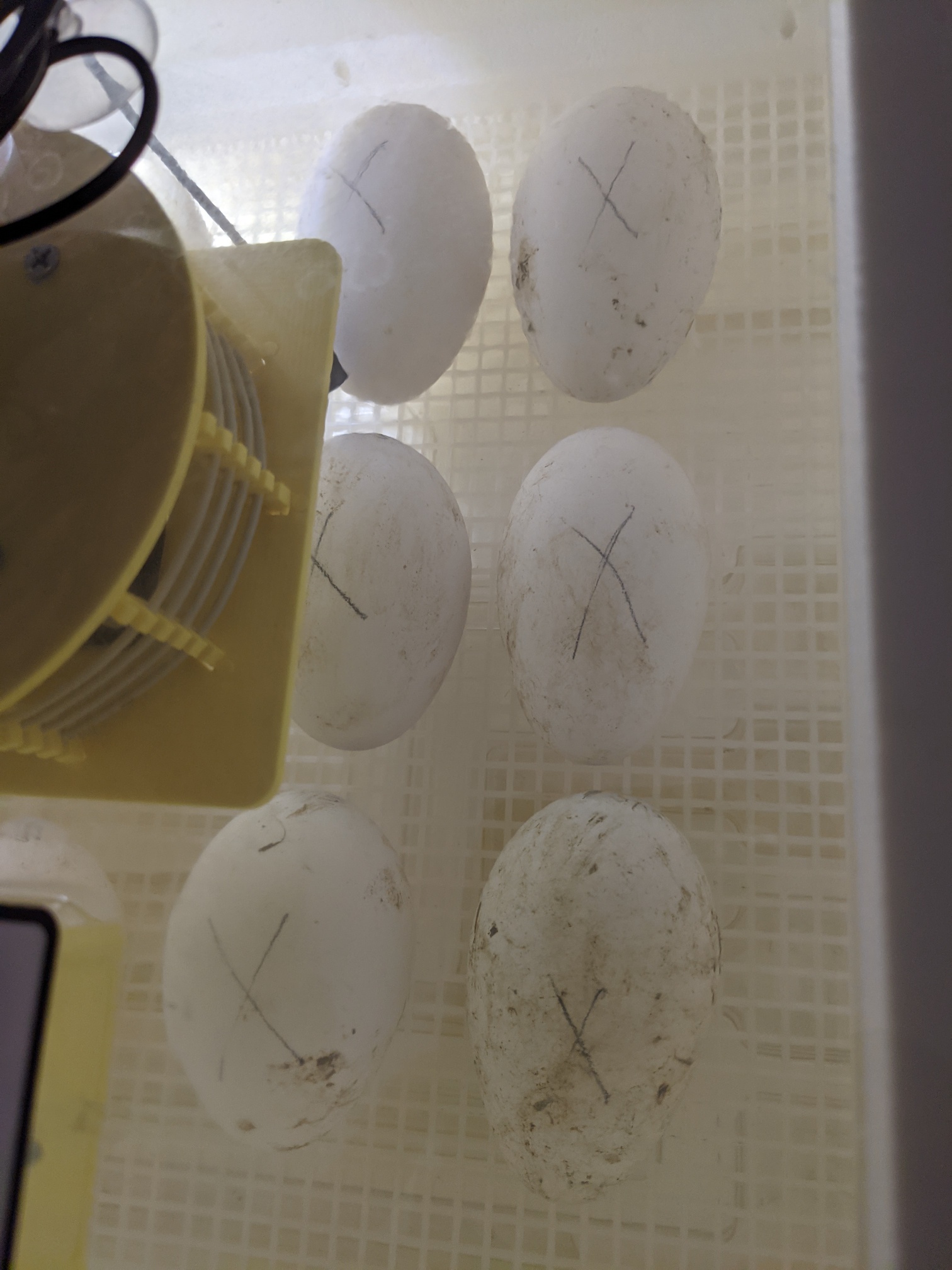
Our lovely ladies have been laying, reliably, so I was able to collect a dozen huge eggs in short order. With luck and lots of hand-turning (and misting and cooling), goslings will emerge in a few more weeks!
I’ve hatched many chicks, ducklings, and (guinea) keets, and goslings are – no contest – my favorite baby poultry. They’re adorably goofy, affectionate (if imprinted on you), and will follow you around like puppies. They’re happy to see you, talkative, and they start grazing on grass and forbs pretty much as soon as they touch it. I look forward to gosling hatching season and taking walks with the babies around the pastures, watching them explore their world and tasting everything. It reminds me, once again, of Nature’s wonder and beauty.

The first candling, done a week into incubation, began promisingly: two for two had obvious veining, then three for three and, almost unbelievably, every one of the dozen eggs had a developing embryo!

While this start doesn’t mean that all 12 goslings will hatch in about three more weeks, fertility was even better (especially for the season’s first eggs) than I’d expected. And, for a breed that apparently has at least some low-fertility lines (this hatchery claims an average of 55% fertility) it was outstanding.
While researching the breed, I also encountered claims – including from other breeders – that their Pilgrims have low hatch rates. Wikipedia notes that the breed has about a 50% hatch rate, and a breeder from whom I purchased hatching eggs (none of which ultimately hatched) last season informed me after the fact that he’d only had a 29% hatch rate from a batch of his gaggle’s eggs that he’d set – not shipped, and still less than a third that developed actually hatched. Not good.
I had (in retrospect, perhaps somewhat unfairly) blamed the complete hatching fail on rough handling by USPS, including their failure to hold the eggs at the Post Office for pickup, despite the Post Office agreeing to do so. The eggs made the circuitous trip from the Post Office to the farm via rural carrier (and not our regular carrier, of course), on bumpy country roads. Candled upon arrival, the eggs showed clear signs of shipping stress, with damaged and detached (rolling) air cells, so I employed specialized incubation techniques to try to overcome the damage, to no avail – a few goslings developed, but none hatched. Artificially incubating goslings is labor-intensive – at least the way I do it – so it’s gutting to put in the time, watch them grow, and then have none even pip.

So imagine my dismay when the breeder drops the information – casually – on me later that he’d had an abysmal hatch rate – these were supposed to be “hatching” (presumably hatchable) eggs! 😱 He clearly didn’t see a problem with it, telling me that he accepted the breed’s “low fertility/hatching rate”as a trade-off for its sexual dimorphism; to me, it’s a sign of something being amiss due to factors like genetic problems (perhaps a shallow gene pool) or poor nutrition, or a combination of causes. From a basic biological perspective, an animal that cannot successfully reproduce is at risk of extinction. Oh, and your buyers are going to be pretty discouraged when they put in the effort to try to hatch the eggs, not realizing the odds are more stacked against them than they could have realized.
Despite that experience, I am still looking for quality stock to help add genetic diversity. I found a local breeder and had planned to purchase hatching eggs; unfortunately, the breeder contacted me recently to let me know that his test batch had a fertility rate that was too low for him to be comfortable selling hatching eggs now. Though I was disappointed that I wouldn’t be able to source new birds from him at this time, I understood his rationale and, especially, appreciated his integrity. As rare eggs, they’re not cheap, and I would have had to drive a couple of hours to get them – discovering that most were infertile afterward would have been beyond disappointing.
Fortunately, my gaggle has a couple of different bloodlines, so sourcing additional stock isn’t an emergency…and, thankfully, no low fertility or hatch rates here. The next candling will be at day 14, and will also mark the approximate halfway point for incubation.
A note about incubation periods: while goose eggs, as a general rule, take 28-35 days to hatch, in looking back at my own hatch logs (and there are many now), this breed has taken an average of 30 days to hatch in my incubators. Unlike chicken eggs, too, a goose egg can take two days from external pip to actual hatch. Patience is definitely necessary when incubating goose eggs!

Comments are closed.